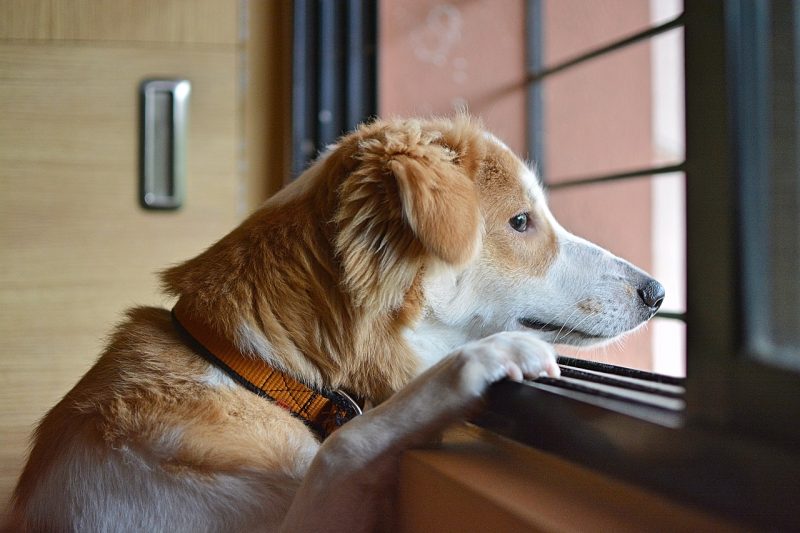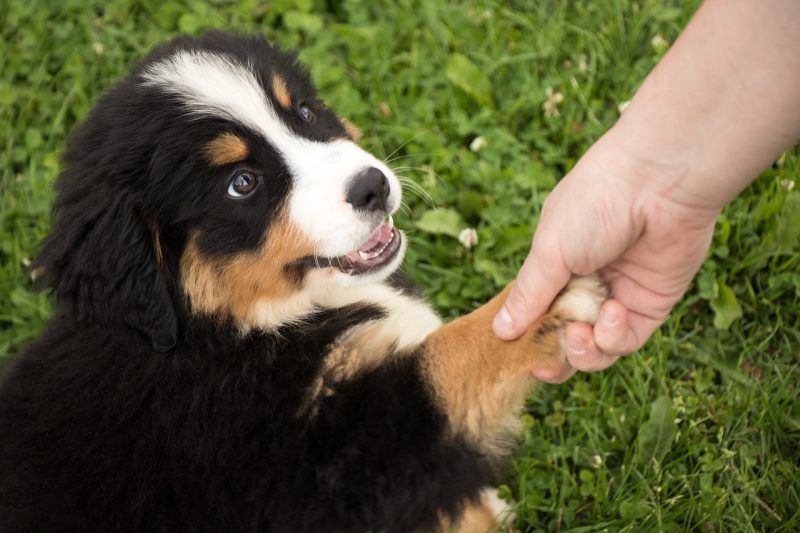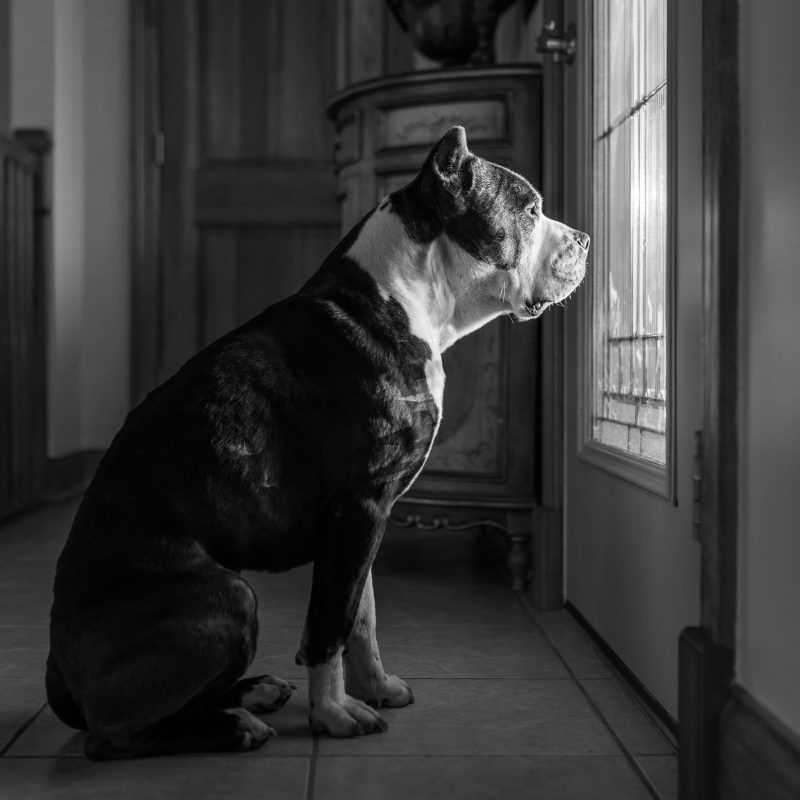Separation Anxiety In Dogs

The most common type of anxiety in dogs is, you guessed it: separation anxiety. Each dog’s reactions to their stress and anxiety may vary. Destructive and worrisome behavior may arise when being left alone, separated from their owner or other pets, or experiencing a change in their daily routine.
What Causes Separation Anxiety In Dogs?
No two dogs are the same. Multiple factors may contribute to the manifestation of separation anxiety. Below we’ll go over a few of the most common causes, signs and ways to manage your dog’s separation anxiety.
Potential factors:
- Attachment or co-dependency: Dogs are social animals and can form very strong bonds with their owners. This is typically a good thing. Bear in mind that there is a difference between a strong bond and over-attachment to their owners. If your dog has become overly dependent on your presence, they may form separation anxiety.
- Change in Routine: Significant changes in the dog’s routine, such as a move to a new home, a new family member, or a change in the owner’s work schedule, can trigger separation anxiety. For example, many dog owners were quarantined during the COVID-19 Pandemic. When the time came for people to go back to work regularly, perhaps you noticed that your furry friend developed some unhealthy reactions to your absence. Your dog became used to their owner being home nearly all the time.
- Past Trauma: Dogs with a traumatic history may be more prone to separation anxiety. Trauma for dogs may include abandonment, abuse, neglect, or exposure to frightening situations. Perhaps a pair of dogs bonded while fending for themselves as stray animals. Upon arriving at a dog shelter, they were put in separate kennels and adopted by different families. While this may seem like a happy ever-after story, the dogs may be affected by the loss of their fellow companion. It’s at this point that separation anxiety may have manifested with the new owners or fellow pets.
- Earlier Life Experiences: Not all separation anxiety is due to traumatic experiences. Dogs need structure, socialization, and training early on in life. The lack of introduction to a variety of sounds, smells, and other beings early on in life, may result in a skittish and insecure pet.
Symptoms
- Excessive Vocalization: Dogs with separation anxiety may bark, howl, whine, or cry excessively when left alone.
- Destructive Behavior: Dogs may chew furniture, shoes, doors, or other objects in the home when anxious. This behavior is often an attempt to alleviate their stress.
- House Soiling: Dogs may urinate or defecate indoors when left alone, even if they are usually well house-trained.
- Pacing and Restlessness: Dogs may pace back and forth, exhibit restlessness, and have difficulty settling down when alone.
- Escape Attempts: In severe cases, dogs may try to escape from their confinement areas, such as a crate or a room, potentially causing harm to themselves.
- Salivating and Drooling: Excessive salivation or drooling can occur in anxious dogs.
- Excessive Licking or Chewing: Dogs may excessively lick or chew their own paws, legs, or other body parts as a self-soothing behavior.
- Panting: Anxious dogs may exhibit heavy panting when left alone.
- Clinginess: Some dogs may display clingy behavior, following their owner around the house and inability to be separated, even if you are in the other room.
- Depression: When not with their owner, some dogs may exhibit signs of depression, such as a lack of interest in play, reduced appetite, and a generally sad demeanor.
- Overexcitement Upon Return: Paradoxically, some dogs with separation anxiety may become overly excited when their owner returns, jumping and exhibiting exuberant behavior.
Managing Separation Anxiety:
- Gradual Desensitization: Start by leaving your dog alone for short periods, then gradually increase the duration over time. This helps the dog become more comfortable with being alone.
- Create Positive Associations: Make being alone an enjoyable experience for your dog. Use special treats, toys, or puzzles that they only get when you leave. This creates a positive association with your departure.
- Crate Training: Some dogs feel more secure in a crate. Ensure the crate is comfortable and provide positive reinforcement for entering it.
- Exercise and Mental Stimulation: Regular exercise and mental stimulation can reduce anxiety. A tired dog is less likely to be anxious.
- Basic Obedience Training: Teaching simple commands such as “stay” and “wait” can help improve your dog’s confidence and security.
- Counterconditioning: Change your departure and return routine to make them less significant. Practice leaving and returning without making a big fuss.
- Medication: In severe cases, medication prescribed by a veterinarian may be necessary to manage the dog’s anxiety.
- Professional Help: Consider consulting a professional dog trainer or a veterinary behaviorist for specialized guidance and training plans.
- Behavior Modification: Work with a professional to address specific separation anxiety triggers and behaviors.
- Consistency: Be consistent in your approach, and avoid punishment for anxiety-related behaviors, as it can make the problem worse.
Remember that managing separation anxiety can take time and patience. It’s crucial to tailor your approach to your dog’s specific needs and consult with a professional if the problem is severe or persistent. With the right strategies and support, many dogs can learn to cope with being alone more comfortably.


